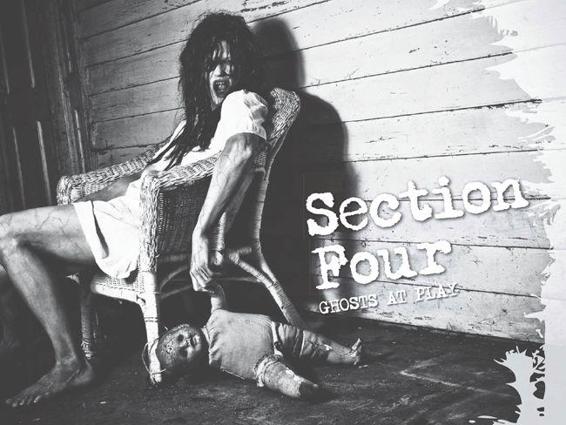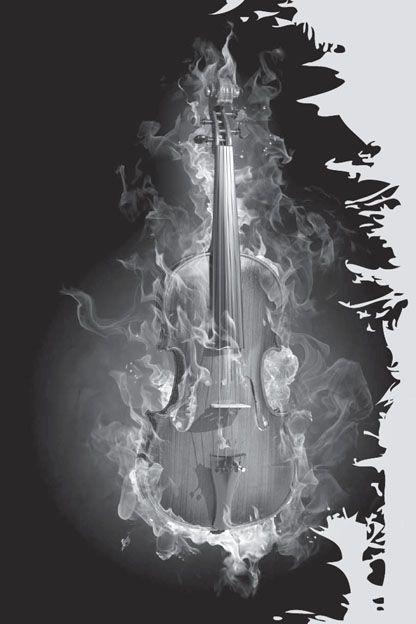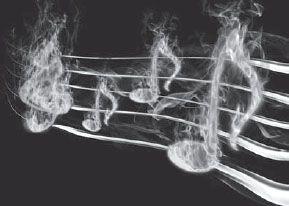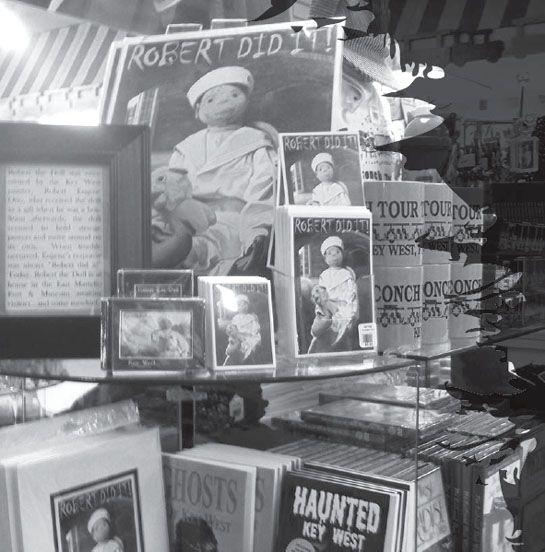Haunted Objects: Stories of Ghosts on Your Shelf (14 page)
Read Haunted Objects: Stories of Ghosts on Your Shelf Online
Authors: Christopher Balzano,Tim Weisberg

At the end of October 2010, Jackie talked about the case on our radio show, “Spooky Southcoast.” Everything on my end began to malfunction. My computer would shut down or I would lose work I had done about her. The show aired without a hitch, but I suffered through several power outages throughout my whole house while it was broadcast.
The next night—Halloween—a documentary about her work and her struggle to free Ronnie from demons aired on cable TV. I set my DVR to record it, but the electricity went out again. I recorded a later broadcast, but when I attempted to watch it, my television kept shutting off. Eventually it was deleted and I never saw it.
My mind was made up: I would leave this case alone.
Jackie did not. She pressed on and believes she has freed Ronnie of the demons that plagued him, and has written a book about it:
The Devil I Know: My Haunting Journey
with Ronnie DeFeo and the True Story of the Amityville Murders
. Since his deliverance, the hauntings have stopped.
Jackie continues to study the paranormal. That is her life, and however dark or intimidating it gets, she is a survivor and always makes it through.
Those boxes of documents are still in her house, and her first book continues to grace the bookcase in the Lizzie Borden Bed and Breakfast. They are part of a bigger picture we can’t see with normal eyes. Even Jackie, who sees more than we ever will, can’t take it all in.

The Haunted Violin
T
here is nothing more haunting than the sound of violin music, especially when the violin itself is haunted.
Harold Gordon Cudworth, a violinist extraordinaire and collector of such instruments, was a popular musician in Massachusetts in the 1930s and 1940s, even hosting his own radio program and making at least one known recording. Yet despite his impressive body of work, Cudworth was perhaps even more famous for the instrument he played, rather than the grace with which he played it.
The story of his haunted violin was well known throughout the small town of Wareham, situated between Plymouth and Cape Cod, even before it appeared in a few volumes of New England legends and lore, including Curt Norris’
Ghosts I Have Known
, Robert Ellis Cahill’s
New England’s Ghostly Haunts
, a compilation of ghost stories from
Yankee Magazine
titled “Mysterious New England,” and
The Haunted Violin: True New England Ghost Stories
, a collection of ghostly tales by Wareham native Edward Lodi.
Cudworth was a discerning player and favored the finely crafted instruments of the Italian masters. He eschewed the more modern violins of his day for the ornate, antiquated versions that had once been carved for royalty and nobility. In fact, Cudworth claimed he knew the “secrets” of such legendary crafters as Antonio Stradivari and Guarneri del Gesu, and how they created such lush sounds from their instruments, even if such claims were more showmanship than supernatural. (Scientific experimentation has revealed in recent years, albeit somewhat controversially, that the chemicals used to treat the wood are responsible for the tones.) Cudworth had amassed quite an impressive collection, yet his favorite was a German model from 1769 crafted by Joseph Hornsteiner.
It was the Hornsteiner violin that he was playing one day in the kitchen of his mother’s home in Wareham. As he played the tune, “The Broken Melody,” a rumbling sound came from the sink. It seemed to stop and start in conjunction with his playing. The phenomenon was repeated in other residences and locations as well. Sometimes when Cudworth played the song, nothing supernatural happened; other times, pictures would rock on the wall and objects would fly across the room.
This took place off and on for over 20 years, including in Cudworth’s own home. In one particular instance, the banging of the latch on the attic door was so severe that Cudworth went upstairs to investigate. When he did, he noticed the door of his music cabinet was open and the sheet music to “The Broken Melody” was left for him to find.

When a group of newspaper reporters led by Norris invited Cudworth to play the tune at the newspaper offices, it set off unexplainable noises throughout the vacant parts of the building and left the reporters scratching their heads. Cudworth, who according to Lodi didn’t believe in ghosts himself, was convinced that something was accompanying his playing. He passed away in 1989, and the Hornsteiner was presumably auctioned with the rest of Cudworth’s collection. Its whereabouts are currently unknown.
Some might argue that the spirits were not attached to the violin, but rather to Cudworth himself. Why, then, would they only manifest during the playing of one particular tune?
It could have been the tune itself. “The Broken Melody” was composed by English cellist Auguste Van Biene in 1892, and became a smash hit that he himself played more than 6,000 times until he died mid-performance in January 1913. Was the spirit associated with Cudworth’s performances that of Van Biene, acknowledging the lasting legacy of his composition?
Even if Cudworth’s Hornsteiner was indeed haunted, it’s certainly not the first instance of the supernatural being associated with the violin.
‘Devil’s Trill Sonata’
There is a story from Germany in the 12th century that is recounted in Howard Schwartz’s
Lilith’s Cave: Jewish Tales of the Supernatural
(Oxford University Press, 1988), in which a carpenter is asked to make a coffin and uses the one remaining board to carve a fine violin. As he worked on the violin and its bow over a few days, he was visited in his dreams each night by the dead man for whom he had constructed the coffin. Each time, the man warned him against creating the violin.
The carpenter, enamored with his handiwork, did not heed the dead man’s warnings. He finished the instrument and immediately drew up the bow to the strings. He had played no more than a single note before the sky grew dark and foreboding and the violin began to play a haunting tune all on its own. The man ran to the window to see what had brought upon such darkness, and as soon as he did, two invisible hands pushed him out the window and into some quicksand below, where he sunk to his suffocating death.
Yet the next morning, the carpenter’s son found his father’s dead body not in a sand pit, but right on the floor of his workshop, the violin next to him.
Another ghastly legend suggests that if you place a violin in a quiet room on Halloween and drop a lone piece of candy or some other offering into the F-hole, the faint sounds of the “Devil’s Trill Sonata” can be heard in the air.
That particular composition also has a legend of its own. Actually titled “Violin Sonata in G Minor,” it was composed by Giuseppe Tartini in 1713, after the devil came to him in a dream.
Tartini recounted the story to French astronomer Jerome Lalande, who printed the composer’s own words in Lalande’s 1765 work,
Voyage d’un Francois en Italie:

“One night, in the year 1713, I dreamed I had made a pact with the devil for my soul. Everything went as I wished: My new servant anticipated my every desire. Among other things, I gave him my violin to see if he could play. How great was my astonishment on hearing a sonata so wonderful and so beautiful, played with such great art and intelligence, as I had never even conceived in my boldest flights of fantasy. I felt enraptured, transported, enchanted: My breath failed me, and I awoke. I immediately grasped my violin in order to retain, in part at least, the impression of my dream. In vain! The music which I at this time composed is indeed the best that I ever wrote, and I still call it the ‘Devil’s Trill,’ but the difference between it and that which so moved me is so great that I would have destroyed my instrument and have said farewell to music forever if it had been possible for me to live without the enjoyment it affords me.”
Although the “Devil’s Trill Sonata” is considered to be one of the most beautiful and technically advanced pieces ever composed for the violin, Tartini himself said that it paled in comparison to what the Devil had played in his dream:
“(It) was so inferior to what I heard that if I could have subsisted on other means, I would have broken my violin and abandoned music forever.”
Shades of Tartini’s dream is echoed in even more contemporary pieces, such as The Charlie Daniels Band’s 1979 hit, “The Devil Went Down to Georgia,” in which Old Scratch is a “fiddler” of great skill.
Even today, a direct connection exists between the supernatural and the violin. There exists a psychoacoustic phenomenon in which a musician plays two simultaneous tones and a third tone, whose frequency is the sum or difference of the two tones being played, can be heard as well. Tartini was the first to discover this anomaly, and so they are known as Tartinin tones.
Or, more commonly, they’re called “ghost tones.”
Robert’s Rules: Chris’ Experience with the World’s Most Haunted Doll
Throughout the history of the ghost story and the horror movie, the haunted doll is the symbol of creepiness, and a classic image of a haunted item.
The mere mention of one makes people shiver, causing them to remember movie scenes like the ones from
Poltergeist
or
Magic
, or
The Twilight Zone
’s Talky Tina. It also reminds them of a dark night from their own childhood, when a trusted toy didn’t quite look right in the shadows.
It’s easy to see why. The dead eyes and frozen expressions make them alive enough to talk if we spend enough time with them. They sit in the corner of the room, watching us, and then do whatever they please when we aren’t around. After all, how often do we remember where or how they were positioned before we left the room or fell asleep?
If dolls are the cornerstone of haunted items, then Robert would have to be the cornerstone of haunted dolls. That’s no surprise to him. He’s been haunting people and inspiring nightmares since he was first made in 1904, and if you believe the stories of his birth, he is doing just what he was made to do.
The story goes that there was tension between Robert Eugene Otto, a famous artist in Key West, Florida, and one of his servants. She was fired, and in her anger she turned to the voodoo she learned as a young child and continued to practice in secret. To prove there were no hard feelings, she built a doll for Otto’s young son, Robert Jr., in his image. However, she cursed it upon leaving. Shortly after being given the doll, also named Robert, the young son asked to be called Eugene, to distinguish himself from the doll.
Not long after entering Eugene’s life, Robert the doll took on a life on its own. Eugene became obsessed with the doll, playing with it and carrying it everywhere. A second voice was often heard when the two were playing together. Items around the house would disappear or be found smashed, or toys of Eugene’s would be destroyed, and little Eugene would be blamed for the mishap. He would object, telling his parents, “Robert did it.” The catchphrase stuck.

